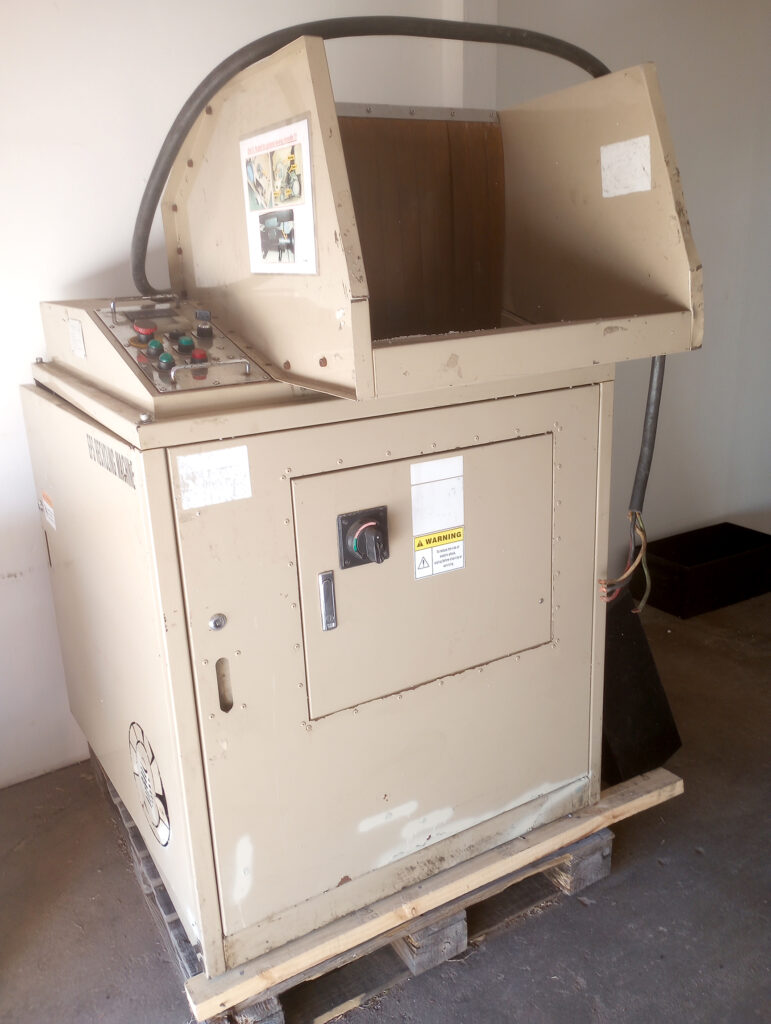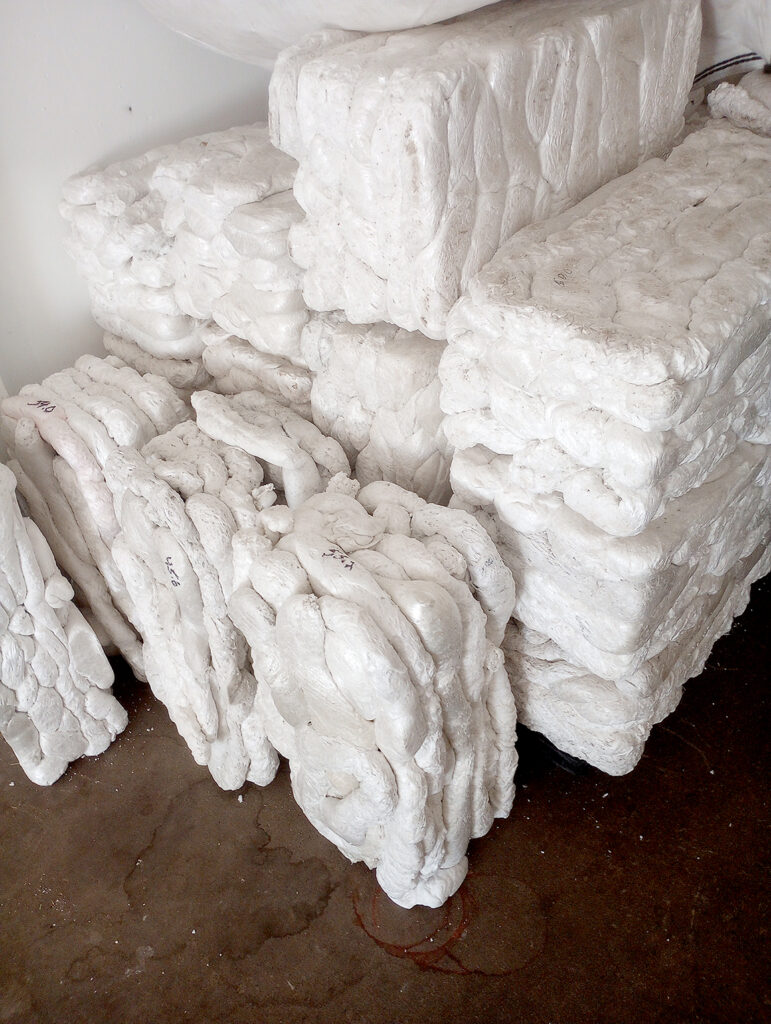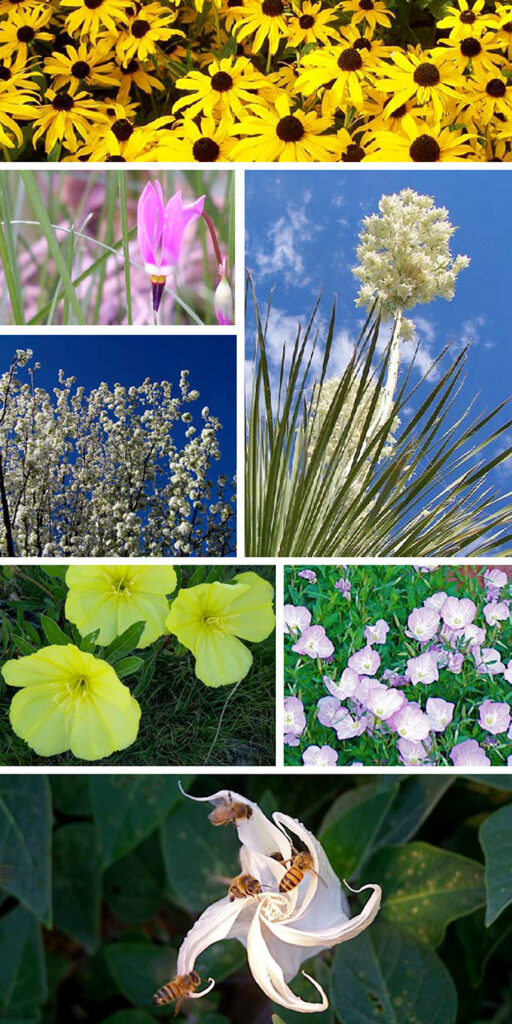Recycling is a concept both Albuquerque residents and the city support…to a degree. But really, where do such things as plastic, paper and food waste go?
The recycling of plastic is in general a misnomer. Probably the only plastics you use which are being recycled are those with the triangular mark of 1 or 2, (large quart or gallon water bottles) and currently #5 but Albuquerque takes all plastics in our bins and say that none go to our landfill. After sorting, they are hauled off by Waste Connections which takes it to a BARCO site. Then the plastics being recycled depend upon the resale market at the time. Do not put anything you want recycled into plastic bags as they will clog the automated sorting machines and be tossed to the landfill unopened. There is confusion as to what is ultimately happening to large, solid and colored plastics.
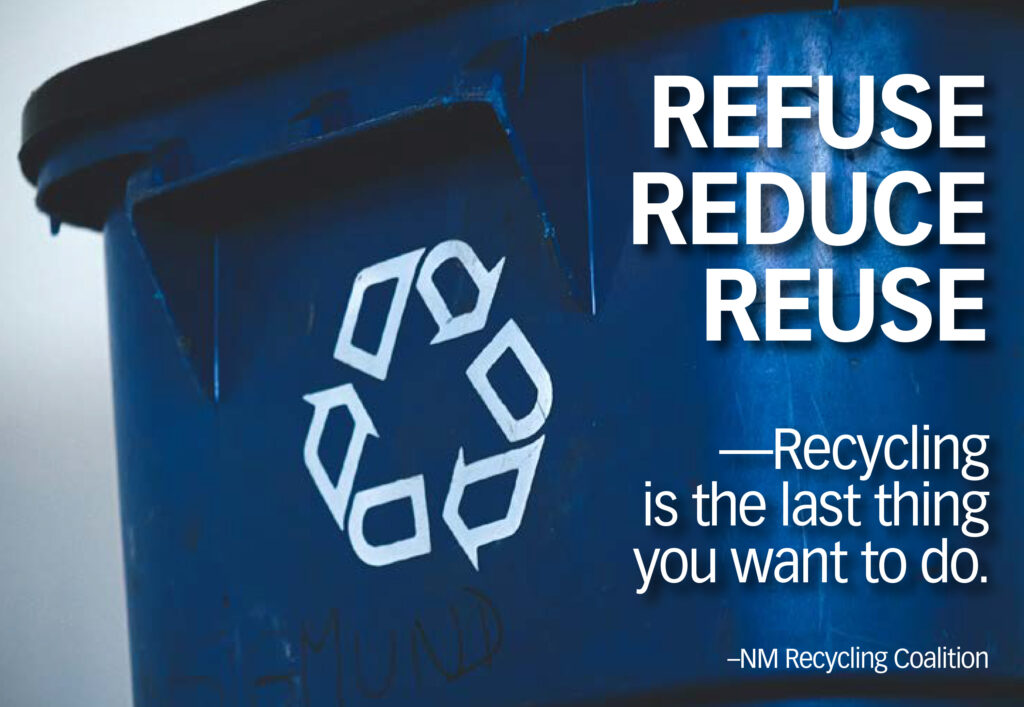
Other countries, such as China, do not want to buy our plastics any longer. One of the reasons for the downturn is the already limited market for recycled plastic because it is cheaper to make plastic nurdles (small plastic pellets) for new manufacturing than to reuse the recycled plastic. In fact 90% of the plastic we use is from recently manufactured nurdles (now considered globally as a persistent chemical contaminant). Making new plastic is an oil and gas business; since the onset of fracking with the increased availability of ethylene, the plastic industry has been booming. In fact, poly resins and compounds brought in $290 billion in revenue for Exon Mobil in 2021. The NM Recycling Coalition has a video, “Taking Action on Plastic Waste” made in 2021 that is well worth watching. The talk on this video by Alexis Goldsmith spells out the link between plastic and the oil and gas industry where they are an alternative stream of revenue. NMRC’s message is to Refuse, Reduce, Reuse. Recycling is the last thing you want to do. The Plastic Waste Reduction Act, introduced in this year’s legislative session, was not passed.
Paper and cardboard are the most frequently recycled items in this bin. Until recently the Friedman Company had been the waste management company with the city contract. They shredded around 120,000 tons per year from the mid Rio Grande counties. The shred is transported to Virginia where it is repurposed as “recycled paper.” Paper can’t be recycled forever as the threads shorten eventually and it does not hold together.
The other common curbside bin is for garbage. This all goes to landfills. The largest landfill in NM is the Cerro Colorado on the West side of Albuquerque. It is an engineered landfill with a sealed plastic lining and covering, a “dry tomb” as the industry calls it. The purpose of the sealing is to prevent water from getting in. Water, mixed with the organic matter in the landfill, creates biogas which is in part methane. Since the concentration of methane in biogas is low compared to the concentration in wells from fracking, it is not useful in industry. However the county is piping some of the biogas to heat the boiler at the Metropolitan Detention Center. The rest of the biogas being flared complies with air quality permits.
The City manages nine closed landfills in order to prevent potential gas buildup, fires, and explosions. The largest is the Los Angeles landfill which was originally a gravel pit. It was closed in 1984 but due to its size, there are 64 wells capturing biogas which then is piped to a flare. General Obligation bonds pay for this needed management.
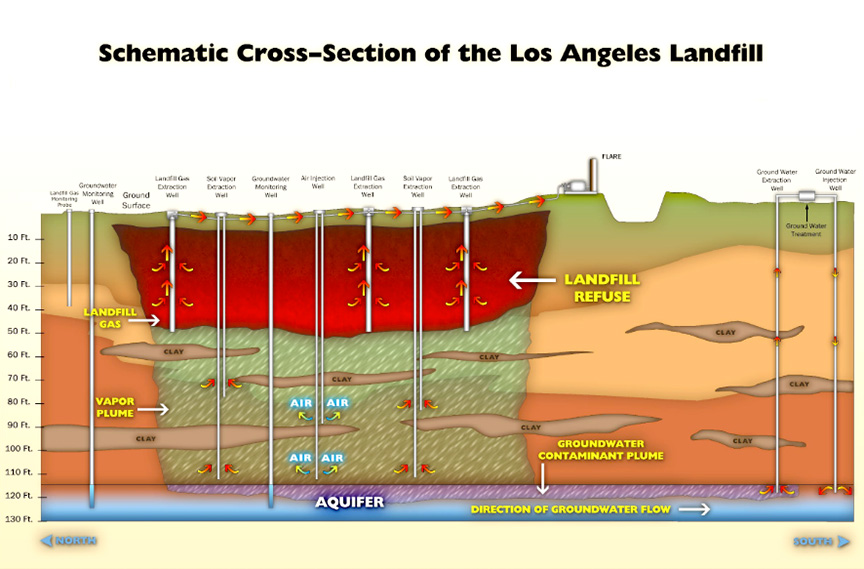
There is controversy about venting vs. flaring. Both are bad for the environment. If venting, all the methane goes into the atmosphere but with flaring, the methane is converted to carbon dioxide which goes into the atmosphere. Since methane is multiple times worse for the atmosphere than carbon dioxide, flaring is considered best for the management of biogas from landfills as the lesser of two evils. A better idea would be to decrease the need for landfills: eat your food and compost the remainders!

